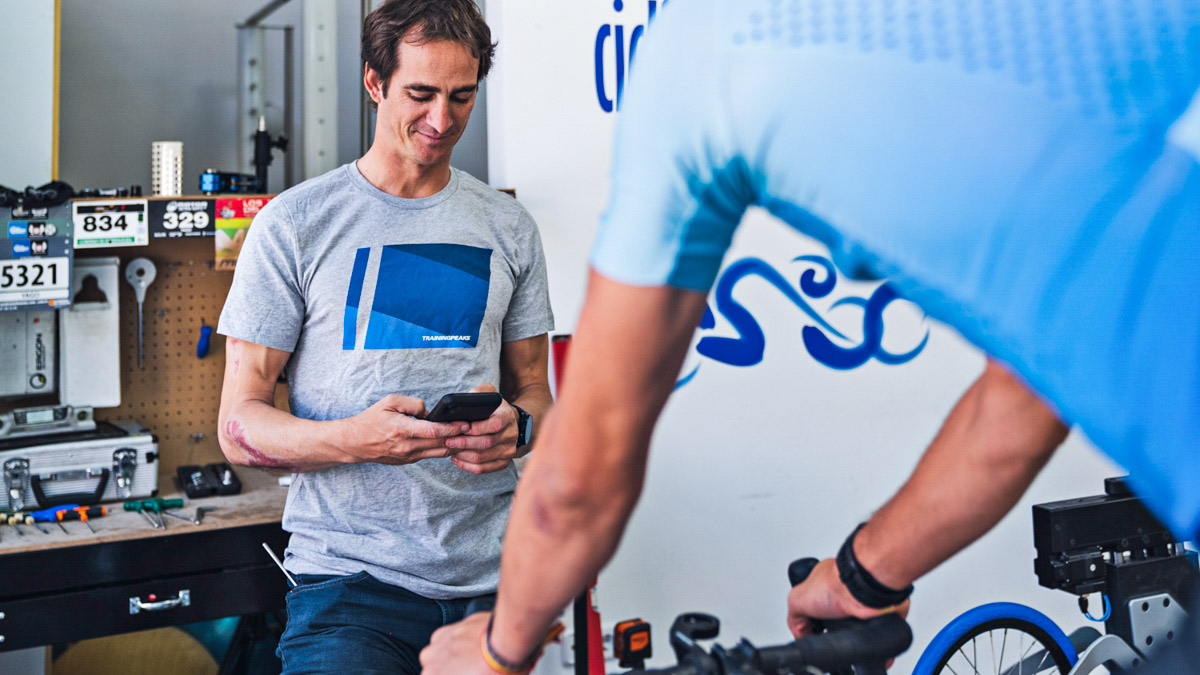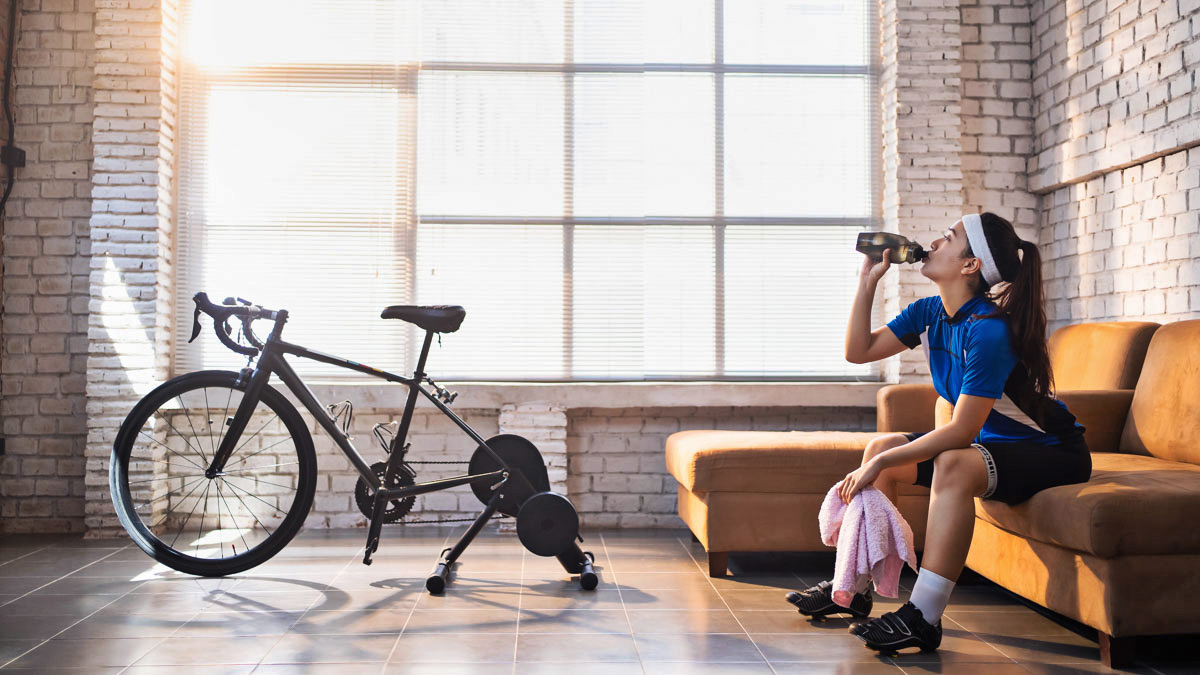Being a competitive cyclist requires year-round training, with most of your time spent on the bike. Training outdoors year-round, however, is not always possible. From weather, such as rain, snow, and ice, to events like wildfires will inevitably force you indoors for periods of time. For those that live in snowy climes, that period is often extended to three to four months come wintertime. Let’s take a look at the physiological adaptations that occur from prolonged indoor cycling, and how you can get the most out of your upcoming trainer season.
Cycling Indoors Can Restrict Your Range of Motion
When riding indoors on a trainer or a set of rollers, you are in a fixed position, which means pedaling with less side-to-side movement, no forward momentum, and without random hills and bumps that change the pitch of the bike and your pedaling position. Rollers and rocker plates do allow for side-to-side movement, but compared to an outdoor ride, these movements are not as encompassing and random. Climbing out of the saddle and rocking the bike beneath you happens at a greater range of motion outside. Long descents, especially on gravel or trail, require lower body isometric contractions while the upper body is working to maneuver around obstacles — movements that are hard to replicate indoors.
Different Muscles are Used on an Indoor Trainer
The effects of gravity, especially on steeper climbs, along with rolling resistance will require greater amounts of force production outdoors compared to what can be produced indoors. The more force an action requires the more muscle fibers that are recruited. Indoors, greater amounts of force can be produced, especially with smart trainers, but with less overall body movement compared to outdoors. This will place a greater load on your prime movers to get the job done, mainly the quadriceps, glutes, hamstrings, and calf muscle.
Using less muscle doesn’t always mean less power when inside — it just means you will use less muscle fibers to achieve peak critical power numbers. The benefit of this is that you are focused on making your prime movers stronger, while the drawback is recruiting less muscle fibers in the legs and less movement in the upper body core and arms. In contrast, when riding outside and especially on climbs, you are pulling on the handlebars, which engages your core and arms. More upper body involvement outdoors, along with more muscle fiber recruitment from the prime movers, means greater demand from the lungs, heart, and overall cardiovascular system, leading to greater cycling-specific aerobic adaptations.
Tips on Maximizing Indoor Cycling Benefits
Stretch Your Cycling Muscles
These include your quadriceps, glutes, hamstrings, and calves. Yoga stretches are a great way to stretch your lower half. Use hero pose to stretch your quads, pigeon pose for your hip flexors and glutes, and downward dog for your calves and hamstrings. Focus on stretching your lower body at least twice a week, holding each stretch for 30-60 seconds.
Reset Your Power Zones
After four to six weeks of indoor training, test your FTP and other critical power numbers to establish new training zones. It takes four to six weeks for muscle adaptation, so give it time for your power numbers to rise indoors, then test.
Exercise Before or After Your Trainer Sessions
Stressing more muscle before or after your trainer sessions will increase overall training stress, leading to greater aerobic adaptations. You can make these cycling-specific, too. Running stairs is aerobic and happens on the front of the foot, like a pedal stroke, and handlebar balance pushups and bent-over rows with weights will engage your upper core and arms. Work 15 or more reps per set spaced with 20-30 seconds of rest between sets to keep these exercises aerobic.
Transitioning to Outdoor Cycling
Your indoor training volume is typically less than what is logged outdoors. Strength gains from training indoors will carry over to outdoor training, but only to the muscles that were trained (mainly the prime movers). Allow four to six weeks of increased volume outdoors to make full-body, cycling-specific adaptations that you weren’t able to achieve indoors. This period will essentially catch the rest of your body up to the strength gains you made inside.
Indoor training provides its own set of challenges. It’s not as fun as a ride outside, the perceived effort is higher, and boredom is a factor. Power readings from your outdoor ride may also greatly differ from what can be produced indoors. Regardless, indoor training brings year-round consistency and that will lead to long-term gains in cycling performance.









